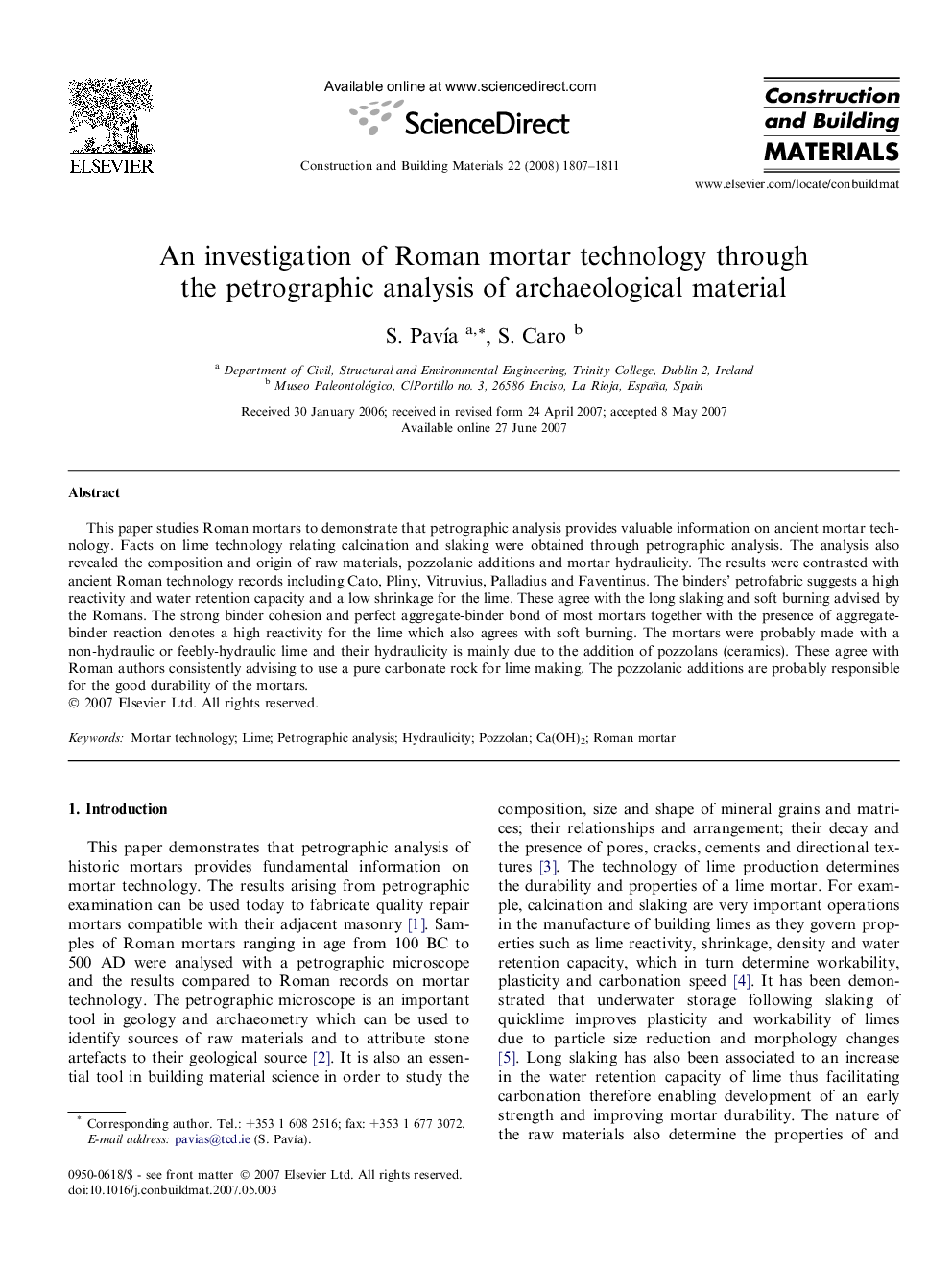| کد مقاله | کد نشریه | سال انتشار | مقاله انگلیسی | نسخه تمام متن |
|---|---|---|---|---|
| 260843 | 503671 | 2008 | 5 صفحه PDF | دانلود رایگان |

This paper studies Roman mortars to demonstrate that petrographic analysis provides valuable information on ancient mortar technology. Facts on lime technology relating calcination and slaking were obtained through petrographic analysis. The analysis also revealed the composition and origin of raw materials, pozzolanic additions and mortar hydraulicity. The results were contrasted with ancient Roman technology records including Cato, Pliny, Vitruvius, Palladius and Faventinus. The binders’ petrofabric suggests a high reactivity and water retention capacity and a low shrinkage for the lime. These agree with the long slaking and soft burning advised by the Romans. The strong binder cohesion and perfect aggregate-binder bond of most mortars together with the presence of aggregate-binder reaction denotes a high reactivity for the lime which also agrees with soft burning. The mortars were probably made with a non-hydraulic or feebly-hydraulic lime and their hydraulicity is mainly due to the addition of pozzolans (ceramics). These agree with Roman authors consistently advising to use a pure carbonate rock for lime making. The pozzolanic additions are probably responsible for the good durability of the mortars.
Journal: Construction and Building Materials - Volume 22, Issue 8, August 2008, Pages 1807–1811